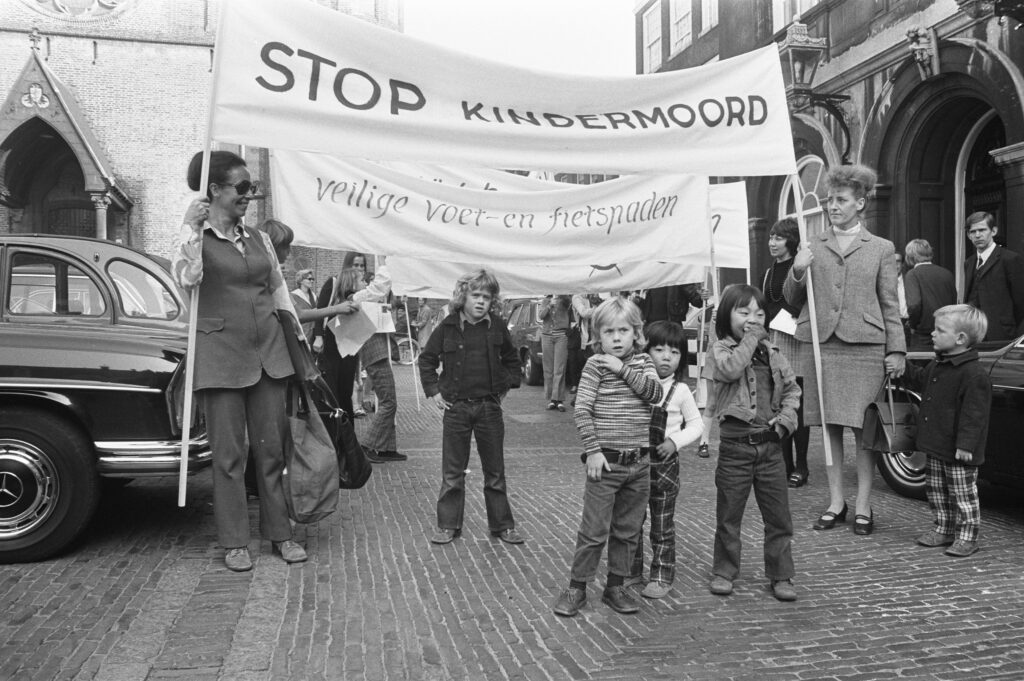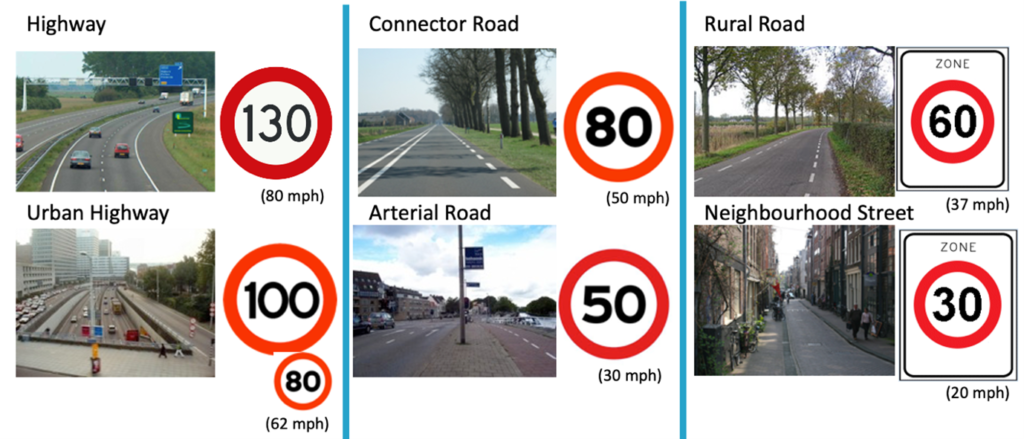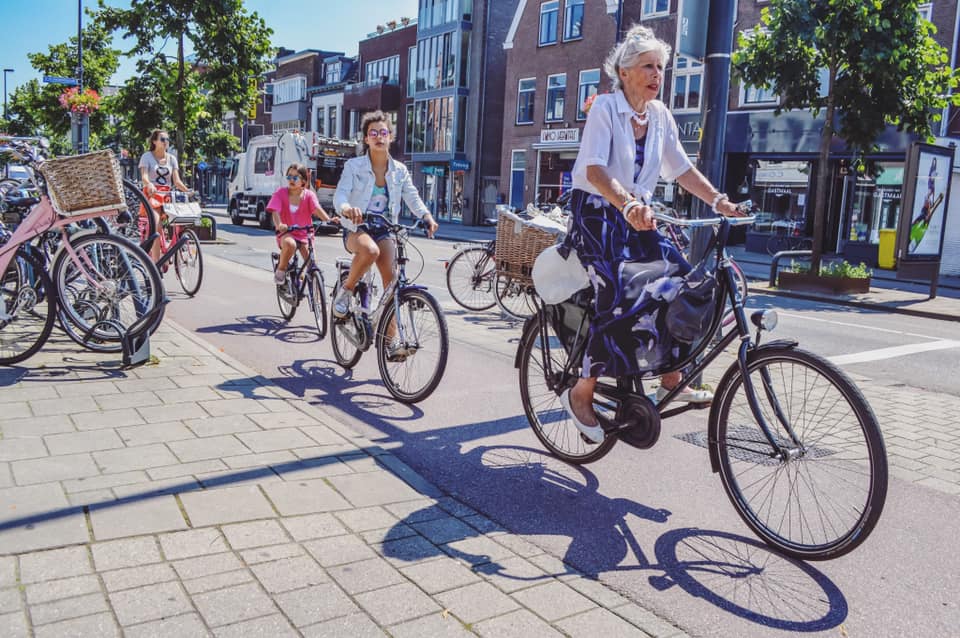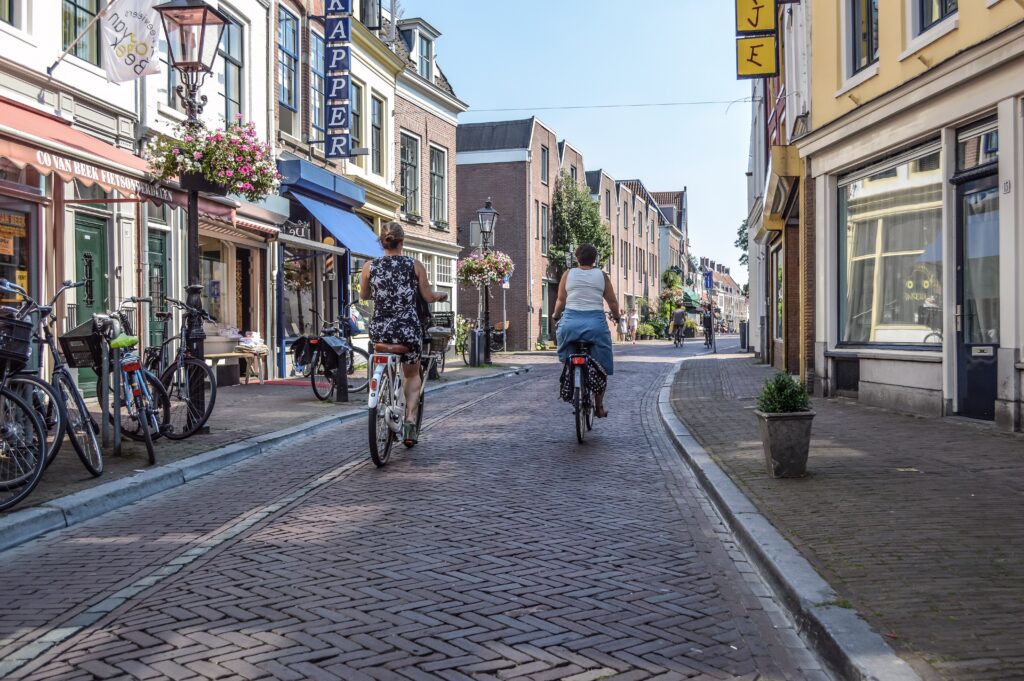Cycling infrastructure / Mobility
Sustainable Safety: The Dutch Approach To Safe Road Design
The way in which roads are designed correlates directly with how safe they are for all road users. Each year, over 1.3 million people are killed on the world’s roads, and millions more are seriously injured. In places like Finland and France these numbers are decreasing to almost zero, but in others, traffic fatalities are climbing, for example, in the US, where they reached a 16-Year High in 2021. While there are multiple factors that affect these numbers, the most important and clear differentiating variable is road design. Sweden was one of the first countries to identify the challenge of safe road design and went on to develop a safe-system approach, called Vision Zero, to address its road-safety problems. The Netherlands took the Swedish model as a starting point and adapted it to its own context through an approach that was titled Sustainable Safety, or Duurzaam veilig. As a result, the Netherlands was able to reduce the country’s traffic fatalities by 80%.
First developed in 1992, Sustainable Safety is the pioneering vision in the Netherlands for the planning and designing of all road networks, guided by the vision that traffic fatalities are categorically unethical and preventable. The development of Sustainable Safety spans over decades, beginning with the government’s response to a traffic safety crisis in the Netherlands in the 1970s. Several years of experimentation with infrastructure followed, focused on reducing traffic injuries and fatalities by improving conditions for people walking and cycling, and cultivating an understanding of the psychology of how people behave when moving through public spaces.
This text provides a brief history of traffic safety in the Netherlands, an introduction to the Sustainable Safety approach, and presentation of the results since its implementation. The text concludes with a discussion of the intended development of Sustainable Safety and its implications for the future of traffic safety in the Netherlands and beyond.
HISTORY OF TRAFFIC SAFETY IN THE NETHERLANDS
At the beginning of the 20th century, Amsterdam and other cities in the Netherlands began expanding through municipal plans such as Plan Zuid and the General Expansion Plan. Both of these plans, which outlined the growth of Amsterdam for the next century, were halted by World War II. Due to the destruction of the war, the Netherlands had to rapidly reconstruct and build new housing, leading to the development of large suburban neighborhoods. In the post-war era, as the Dutch economy began to recover, people were also able to buy cars, which quickly grew in popularity. In the 1950s and 1960s the Netherlands, like many other countries, saw the rise of the automobile, with a spike in motor vehicle travel and the expansion of car infrastructure, such as highways. With this came an increase in traffic fatalities, leading to the turning point of the 1970s.

In the 1970s, two major developments in the Netherlands occurred, which were to have a fateful effect on the country’s approach to traffic safety, ultimately giving rise to the Sustainable Safety approach: The Stop de Kindermoord protests and the 1973 oil crisis. Due to the increased number of cars on the road, traffic fatalities grew to 3,300 in 1971; more than 400 of the victims were children. An outraged public began protesting in the thousands as part of the “Stop Child Murder” movement (Stop de Kindermoord), forcing the government to start taking traffic fatalities seriously. At the same time, the Netherlands was subject to an oil embargo in the 1973 oil crisis, which quadrupled the price of oil. In response, a nationwide “Car-Free Sunday” initiative was instituted, prohibiting residents from driving anywhere in the country on Sundays. The initiative allowed and encouraged children – and adults – to play in the streets, reminding people of the social benefits of quiet roads without cars. The combined pressure of road fatalities and the spike in oil prices ultimately led the Dutch government to shift its policies, which in turn correlated directly with a reduction in traffic fatalities. Cities began to experiment with innovations in urban design with a focus on creating safe road infrastructure. The innovations included woonerfs (a residential street that prioritizes pedestrians and creates a low-speed traffic environment through traffic calming methods), creating car-restricted city centers, and cycling routes. Thus, the combination of protests, activists, and urban innovation ultimately led in the 1990s to the introduction of the Netherlands’ current and longstanding plan for road safety, titled “Sustainable Safety”.
WHAT IS SUSTAINABLE SAFETY?
Sustainable Safety is a shared initiative between the national, provincial, and municipal governments in the Netherlands. It was first conceptualized in 1992 by the Dutch Institute for Road Safety Research (SWOV), officially implemented in 1997, and later updated in 2005 and in 2018. The third edition of the Sustainable Safety guidelines was published in 2018, outlining the vision for 2018-2030.
Sustainable Safety was inspired by the 1987 UN-Brundtland report, “Our Common Future”, a founding document in global sustainable development, and the first to introduce the concept of sustainable transportation. Its vision drew on the report, applying the principles of sustainable development to the concept of road safety.
Sustainable Safety has two main goals: to prevent crashes from occurring, and in the event of a crash, to prevent serious injuries or fatalities. Since its adoption as a national guideline, Sustainable Safety has shaped the subsequent decades of Dutch roadway design, creating streets ideally suited to the majority of trip modes involving pedestrians and cyclists of all ages and abilities. Its systematic and proactive approach towards maximum road safety has aimed to ensure that every road user comes home safely.
To this day, Sustainable Safety remains the guiding document for traffic safety in the Netherlands and incorporates infrastructure recommendations, but also information about education, enforcement, vehicle safety and traffic regulations. Sustainable Safety comprises five guiding principles: functionality, homogeneity, predictability, forgiveness, and state of awareness
THE PRINCIPLES OF SUSTAINABLE SAFETY
FUNCTIONALITY
The first principle in Sustainable Safety is functionality, a hierarchical categorization of roads in relation to their primary use. There are three main road categories, each with corresponding design requirements and cycling infrastructure, which can be found in the Dutch Design Manual for Bicycle Traffic from CROW. The first is the Stroomwegen, main thoroughfares such as highways or urban highways. These are designed to move a large volume of cars at over 80km/h efficiently and safely. The second category is the Gebiedsontsluitingswegen or distributor roads, which include arterial and connector roads that can be found in both urban and rural environments. The maximum speeds on these roads are 50 and 80km/h respectively and are designed for the flow of vehicles. These roads, unlike Stroomwegen, are not limited to motor vehicles. Separation of vehicle families is required on these roads, and protection of cyclists is achieved by various solutions including segregated cycle tracks, protected cycle tracks, and raised cycle tracks.
The final category is the Ergtoegangswegen, a category of access roads including neighborhood streets and rural roads where the maximum speeds are 30km/h and 60km/h respectively. They are designed to slow traffic down using various traffic calming techniques, and allow for the mixing of different vehicle families (i.e. cars and cycles).

HOMOGENEITY
The second principle of homogeneity determines according to mass and speed of various modes of transportation whether they can be mixed on the same road or whether they should be separated. For example, while the principle recommends that two modes of different mass (i.e. a cycle and a car) should be physically separated on an arterial road where speeds are high, it allows to mix them on a neighborhood street where permitted speed is 30km/hr maximum.
PREDICTABILITY
The third principle is predictability, based on the logic that roads should be designed consistently so that road users know how they should act and can predict in real time how fellow travelers will use the space. People walking, cycling, and driving should recognize, for example, whether they are on an arterial road or a neighborhood street, based on how it is designed, and therefore know how to conduct themselves (see “State of Awareness,” below), as well as how to gauge the safety of the road and act accordingly.
FORGIVENESS
The fourth principle is forgiveness of the environment and road users. It requires creating environments such that the potential for human error is unlikely to result in serious injury and hence, any accident will be “forgivable.”
STATE OF AWARENESS
The fifth and final principle is the state of awareness by the road user, cultivating a culture, in which road users are expected to be able to act appropriately in traffic, including understanding how to use their vehicle and to behave in a manner suitable to the conditions of the given thoroughfare.
ROAD VS STREET DESIGN
The principles of functionality, homogeneity, predictability, forgiveness, and state of awareness are applicable and beneficial to all modes of travel, but they have a particularly positive impact on safety for vulnerable road users. Their implementation creates public spaces, where people walking or cycling are prioritized, rather than obscured within a mobility system that favors faster, motorized traffic.
From a birds-eye view of Dutch cities, the results of Sustainable Safety design principles can be seen most clearly in the infrastructure design differences between roads and streets. By first using the homogeneity principle to separate between different modes of transportation (car vs cycle) to design urban traffic environments accordingly by type (arterial road vs neighborhood street), and then applying infrastructure guidelines according to the functionality, conflict between different road users could be eliminated.
For example, on an arterial road, the speed limit for cars is 50km/h, and therefore, physical separation between cars and cycles is required. On a neighborhood street, the speed limit for cars is 30km/h, but the street is designed to slow the car down even further using different traffic calming strategies (raised intersections, narrow streets, speed bumps), and therefore, cars can safely coexist with cycles. The design recommendations for roads and streets can be found in the aforementioned CROW manual.


RESULTS OF SUSTAINABLE SAFETY
In the past 50 years, the Netherlands saw a 30% increase in population and a 300% increase in kilometers traveled. While there has been an increase in traffic fatalities globally, as the number of drivers grew in other countries, traffic fatalities in the Netherlands decreased by 80%, from 3,300 in 1971 to 582 in 2021. This is a direct result of the various policy changes enacted since the 1970s and the introduction of the Sustainable Safety approach. In addition, since the implementation of Sustainable Safety and the standardization of cycling infrastructure, the Netherlands has seen some, with almost 27% of all trips being made on cycle.
In the last few years, the number of traffic fatalities in the Netherlands has remained relatively stable. Yet, most of the 2021 fatalities were among older road users (38% were aged 70 or older) and more than one third were cyclists, indicating the continuing need to protect vulnerable road users.
WHAT DOES THE FUTURE HOLD FOR TRAFFIC SAFETY?
Sustainable Safety is a flexible document that has been updated over the years. In its most recent update from 2018, titled “Sustainable Safety 3rd edition – The advanced vision for 2018-2030”, it re-categorized the earlier established principles:
Three of the five principles have been categorized as design principles:
1. Functionality of roads;
2. (Bio)Mechanics: Limiting differences in speed, direction, mass, and size, and giving road users appropriate protection;
3. Psychological: Aligning the design of the road traffic environment with road user competencies.
The other two principles are now labelled as organizational principles:
4. Effectively allocating responsibility;
5. Learning and innovating in the traffic system.
While the three design principles are based on the original principles, the two new organizational principles introduce the notion of responsibility and of learning and innovating.
The success of Sustainable Safety is partly attributed to its flexibility, making it particularly resilient to changing cities and landscapes. Rather than prescribing a specific set of technical guidelines, the Sustainable Safety principles provide a flexible approach to challenges such as liveability, accessibility, and sustainability. More and more cities are moving away from car-centric planning, and new design methods are necessary for adapting to these challenges and the emerging trends. Innovative approaches are being tested out such as The Good Street, which provides a new way of thinking about how to design cities and help them find a balance between the attractiveness of a given place (quality and access to shops and services) versus flow (people and goods moving through the street).
Finally, the Dutch Sustainable Safety model could be applied outside the Netherlands given that its core principles are not specific to Dutch roads and/or culture. Thus, the Sustainable Safety model and principles have the potential to help designers, policymakers, and planners around the world to reimagine streets that are safe for all road users.
This update was originally published by the Israel Public Policy Institute on March 9, 2023. See the original article here.
 ">
">Anna Wyner
‘At a time when cities around the world are reclaiming public space away from cars and towards people faster than ever, I have a newfound determination to create and help enable change. I am excited to help bring Dutch expertise and experiences to the rest of the world, in hopes that we can transition to a more just, equitable, and sustainable world.’

